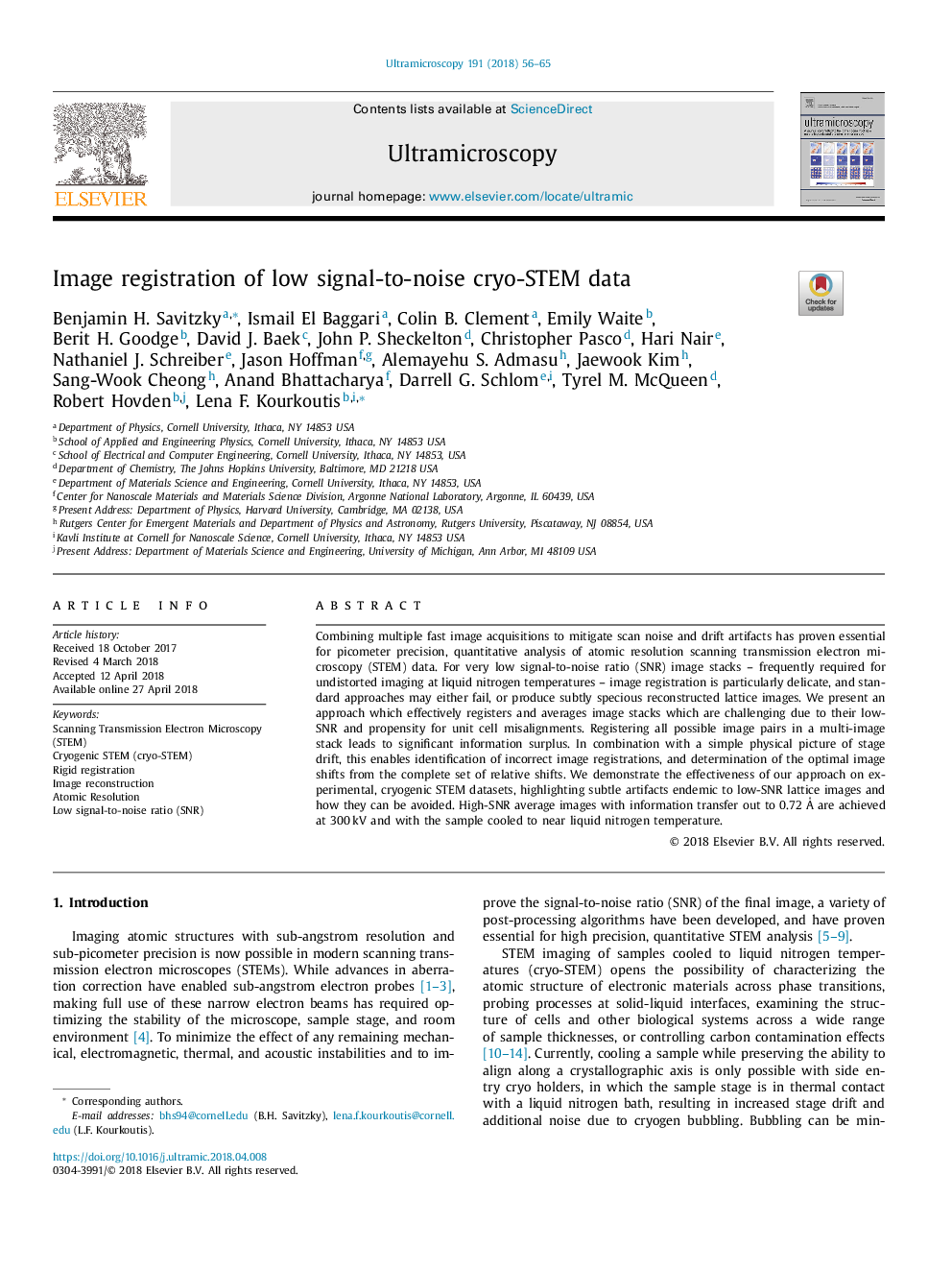| Article ID | Journal | Published Year | Pages | File Type |
|---|---|---|---|---|
| 8037655 | Ultramicroscopy | 2018 | 10 Pages |
Abstract
Combining multiple fast image acquisitions to mitigate scan noise and drift artifacts has proven essential for picometer precision, quantitative analysis of atomic resolution scanning transmission electron microscopy (STEM) data. For very low signal-to-noise ratio (SNR) image stacks - frequently required for undistorted imaging at liquid nitrogen temperatures - image registration is particularly delicate, and standard approaches may either fail, or produce subtly specious reconstructed lattice images. We present an approach which effectively registers and averages image stacks which are challenging due to their low-SNR and propensity for unit cell misalignments. Registering all possible image pairs in a multi-image stack leads to significant information surplus. In combination with a simple physical picture of stage drift, this enables identification of incorrect image registrations, and determination of the optimal image shifts from the complete set of relative shifts. We demonstrate the effectiveness of our approach on experimental, cryogenic STEM datasets, highlighting subtle artifacts endemic to low-SNR lattice images and how they can be avoided. High-SNR average images with information transfer out to 0.72Â Ã
 are achieved at 300â¯kV and with the sample cooled to near liquid nitrogen temperature.
Keywords
Related Topics
Physical Sciences and Engineering
Materials Science
Nanotechnology
Authors
Benjamin H. Savitzky, Ismail El Baggari, Colin B. Clement, Emily Waite, Berit H. Goodge, David J. Baek, John P. Sheckelton, Christopher Pasco, Hari Nair, Nathaniel J. Schreiber, Jason Hoffman, Alemayehu S. Admasu, Jaewook Kim, Sang-Wook Cheong,
